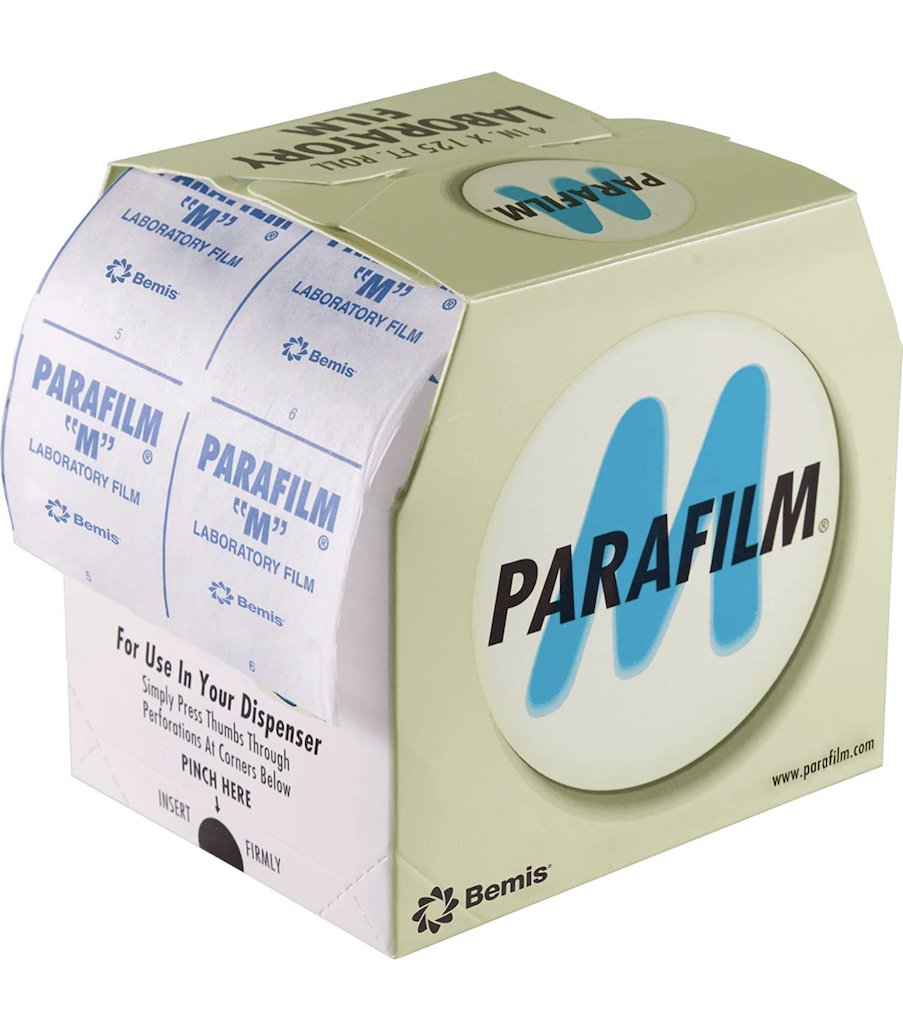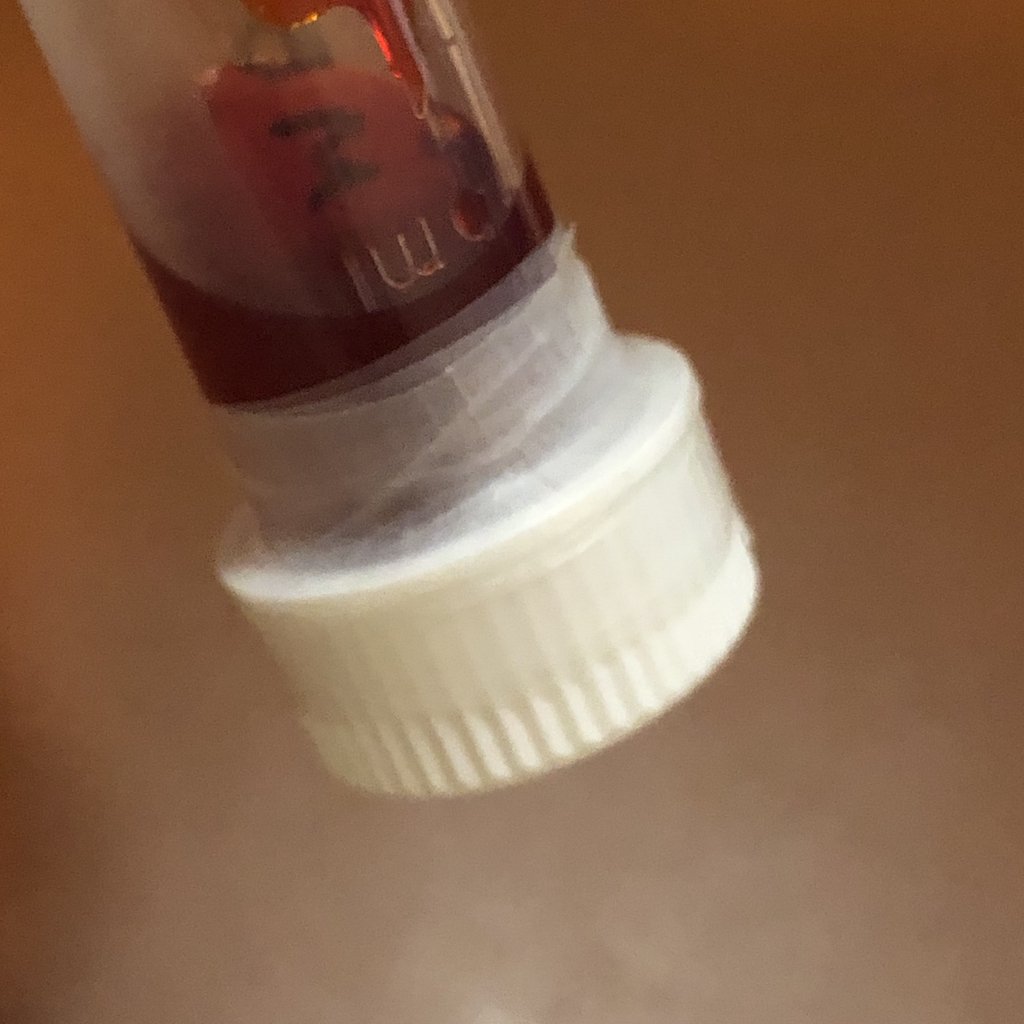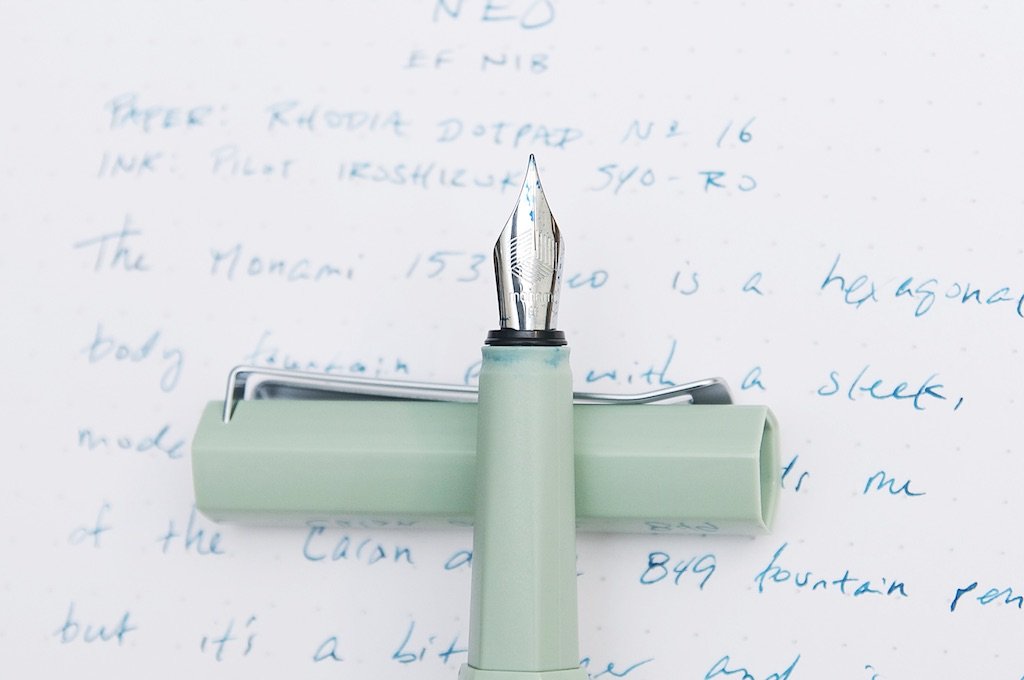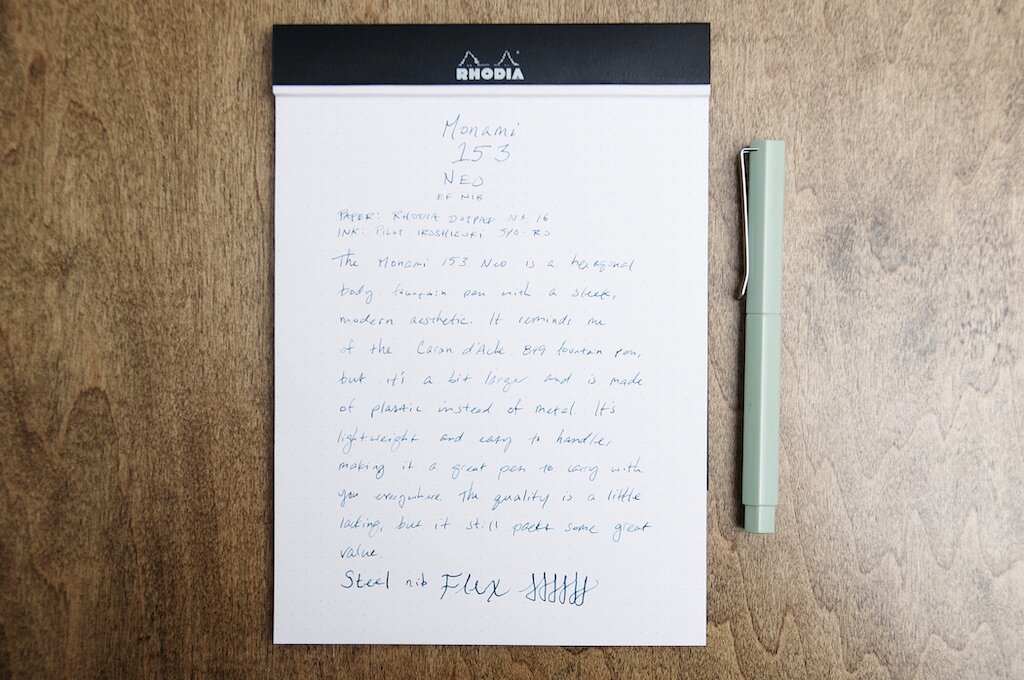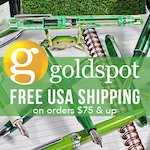(Sarah Read is an author, editor, yarn artist, and pen/paper/ink addict. You can find more about her at her website and on Twitter. And check out her latest book, Out of Water, now available where books are sold!)
The Esterbrook JR, this petite, lovely pen is designed as a revival of the vintage Esterbrook J, the iconic pocket pen that is still widely popular today. The shape, style, and design of the piece definitely recalls its ancestor, but with a modern twist that will no doubt make this model popular with contemporary pen addicts.
This is a limited edition pen from Esterbrook, part of a seasonal line of tropical inspired colors. This Blue Breeze color is a bright turquoise acrylic with a yellow acrylic end cap "jewel" and gold-plated furniture. It has a gold-plated steel German Schmidt nib. It's also available in “Orange Sunset” and “Lemon Twist” colors, all bright and fun, as well as a few non-limited edition colors.
The nib did need a small bit of tuning out of the box. It's a juicy broad nib, but it dragged a little on horizontal lines. The tines appeared to be aligned, so I smoothed it with a bit of micro-mesh and now all is well. It writes with great ink flow that shows off the qualities of the ink used, and I have not experienced any drying out or hard starts. (Ink shown is Sailor Ink Studio 773.) It takes either a cartridge or converter, and comes with both.
The cap screws securely, the clip is firm but flexible, and the cap does post, though not deeply and you'd risk scratching the acrylic over time. The grip section is in the same blue acrylic and it has been shaped with a nice dip and flare for comfortable writing.
Though it is called a pocket pen, in size and shape it is very similar to a Sailor Pro Gear Slim or a Pelikan M200. Definitely a smaller pen, but not as small as what I'd consider a true pocket pen. It is quite slender, so some folks with larger hands may find it uncomfortable.
This edition can generally be found for about $140, which is a very fair price for its size and quality. I like it a lot and I'm already tempted by the forthcoming "Pumpkin Latte" edition. With the good price, small size, and fun colors, they remind me a bit of where Sailor Pro Gear Slims were six or so years ago, when they were both affordable and collectible. I could definitely see myself collecting a few editions of this charming wee pen.
(Kenro Industries provided this product at no charge to The Pen Addict for review purposes.)
Enjoy reading The Pen Addict? Then consider becoming a member to receive additional weekly content, giveaways, and discounts in The Pen Addict shop. Plus, you support me and the site directly, for which I am very grateful.
Membership starts at just $5/month, with a discounted annual option available. To find out more about membership click here and join us!











